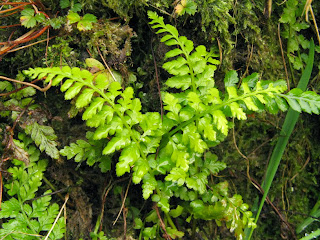 |
| Top |
 |
| Bottom |
 |
| Side View |
As far as identification goes, the prime suspect, at the moment is Juglans nigra (J. neotropica is far less likely), the Black Walnut of Eastern North America, the range of which includes Florida, and large numbers of its seeds to find their way into the gulf of Mexico and the Gulf Stream, then potentially to our shores, via the North Atlantic Drift.
It is also grown as an ornamental tree in larger UK gardens, parks and collections and it is possible that this one originated here, but as Black Walnut seed can remain buoyant in salt water for up to fifteen months and they are known to be carried by the Gulf stream, in large numbers to the beaches of the Eastern seaboard of North America, it is just as possible that this is a true long distance traveller.
As I write this, I can see a Coconut I picked up at Kenfig a few years ago. It bears all the hallmarks of one brought here by the Gulf Stream. It is small, the nut is about the size of a cricket ball and still mainly enclosed in its coir husk, which is covered in tiny holes, made by insect larvae burrowing through it. The nut itself has the chalky tube of a Serpulid worm, proving it had been at sea for some time.













































